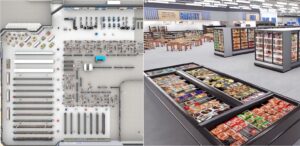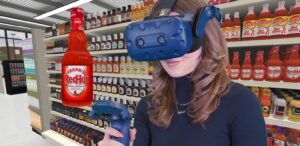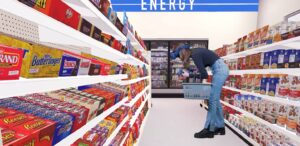Self Checkout Technology for the Best Checkout Experiences
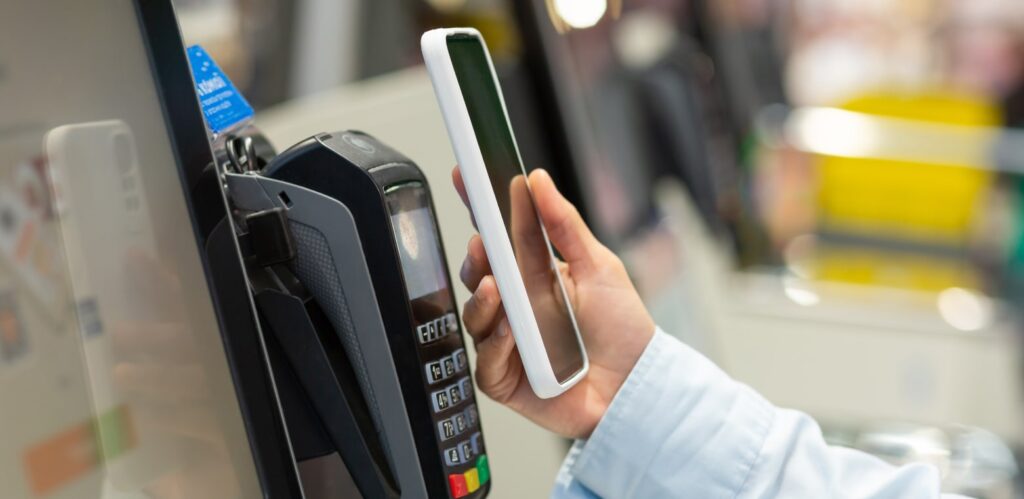
Explore innovative retail checkout counter ideas driven by the latest self checkout trends. These new front of store technologies are elevating brands with unique competitive advantage.
In the retail industry, it's universally recognized that creating a delightful customer experience is paramount. Years of research has revealed that the retail checkout experience is one of the most important in-store interactions that influences shopper satisfaction. This is why retailers around the globe continue to look at new ways to remove friction from the checkout process.
These insights have led to the growing popularity of self-checkouts in retail stores. Self checkouts have become favorable to many customers due to the convenient and quick checkout process they deliver. Recent reports have shown that 80% of in-store shoppers like the idea of a nontraditional checkout and 66% say they are the experiences they desire most.
Self-checkout technology in retail has revolutionized the way we shop. With cutting-edge advancements, these automated systems now offer an even smoother and more user-friendly experience. Retailers benefit too, as they can deploy fewer cashiers and allocate staff to more customer-focused roles. This not only saves costs but also improves the overall shopping experience. Customers can simply scan their items and pay, skipping long lines and cashiers, reducing wait times.
Self-checkouts bridge the gap between brick-and-mortar and e-commerce, appealing to tech-savvy consumers who prefer digital convenience. The result? A retail landscape that's efficient, customer-centric, and seamlessly blends technology with traditional shopping.
In 2023, these retail checkout solutions have advanced even further. Read on to explore the future of retail checkout kiosks and how retailers can improve self-checkout through the latest technologies.
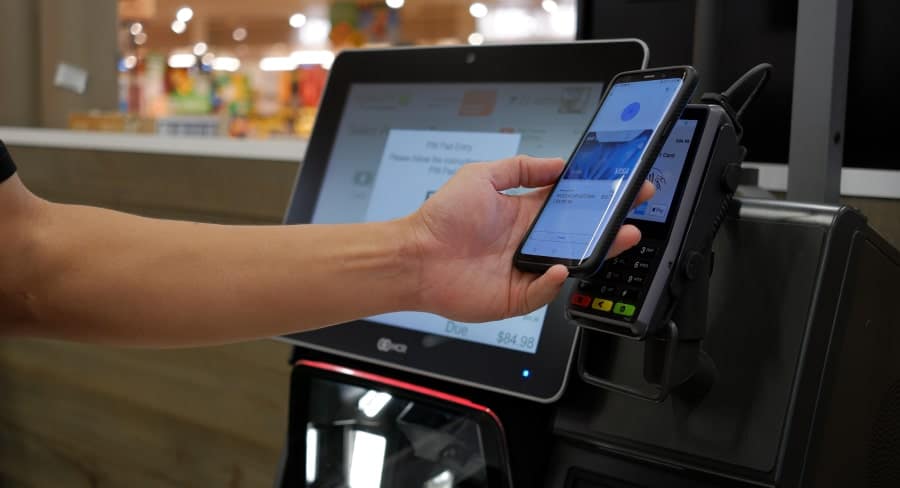
1. Touchless and contactless payments
Contactless payment options, also known as touchless payments, tap-and-go, or scan-to-pay, have revolutionized transactions using technologies like RFID or near field identification. These methods involve payment cards and mobile apps linked to digital wallets, enabling swift, secure, and convenient transactions by communicating with readers at a short distance.
Prominent touchless payment methods encompass contactless debit and credit cards, along with mobile wallets like Google Pay and Apple Pay, accessible through smartphones. Another significant innovation seen in various self-checkout systems is QR code scanning. This feature empowers customers to effortlessly scan on-screen QR codes, enabling payment via mobile phones and eliminating the need for card insertion.
This approach reduces contact with employees, safeguards against potential card information theft via "skimmers," and ensures a streamlined, secure, and hygienic payment experience. An Insider Intelligence report foresees contactless spending doubling 2022 figures by 2026. In light of this trend, retailers would be wise to embrace these contactless options to seize potential sales opportunities.
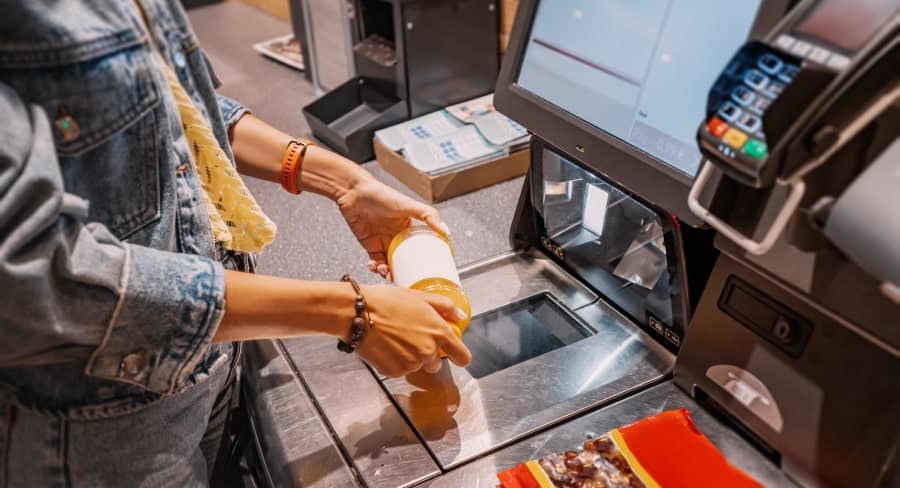
2. Artificial intelligence
Continuous efforts are being made to elevate the front of grocery store experience, and a prevailing and successful approach is the integration of artificial intelligence. AI-assisted checkouts utilize advanced algorithms to analyze images of products scanned by customers. Using this information, the system detects errors, prompts customers to self-correct, and alerts associates when needed, resulting in reduced errors and increased sales.
Kroger, the largest supermarket chain in the United States, has introduced AI-enabled self-service checkouts (SCOs) to minimize customer friction and reduce stock losses. After successful pilot testing, Kroger has rolled out this AI-based self-checkout system to 1,700 stores, aiming to implement it across all locations soon.
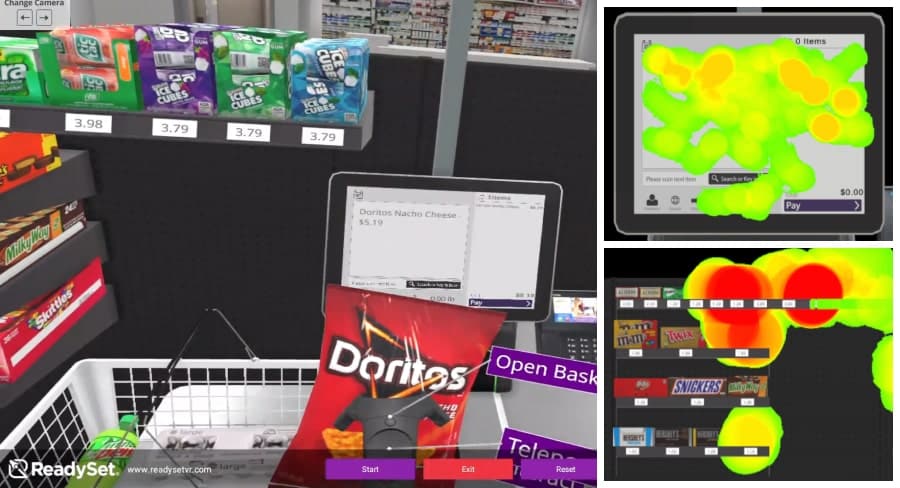
3. VR self-checkout research
The convenience, speed, and accessibility of technological advancements have reshaped traditional shopping habits and point of sale expectations. As these technologies continue to innovate, checkout counters for retail stores and checkout UI will also need to evolve.
This evolution has introduced the concept of virtual self-checkouts, an innovative store planning and shopper research approach that leverages eye-tracking VR store simulations. Through creation of virtual reality retail front ends, brands can test product assortments, checkout screen UI promotional messaging and more. Retailers can also utilize these tools to optimize their checkout screen designs and front of store layouts.
Virtual self-checkouts offer a cost-effective solution for assessing assortment arrangements within the checkout area and analyzing shopper focus as they actively complete their checkout process and engage with screen content. By using a virtual reality front end builder, organizations can experience the checkout process in immersive 3D and perform shopper research that generates aisle and self-checkout screen eye-tracking heat maps. Gaining this deeper understanding of consumer behaviors and decision making on impulse purchases that will allow you to refine strategies that foster a more seamless customer checkout experience and drive front end sales.
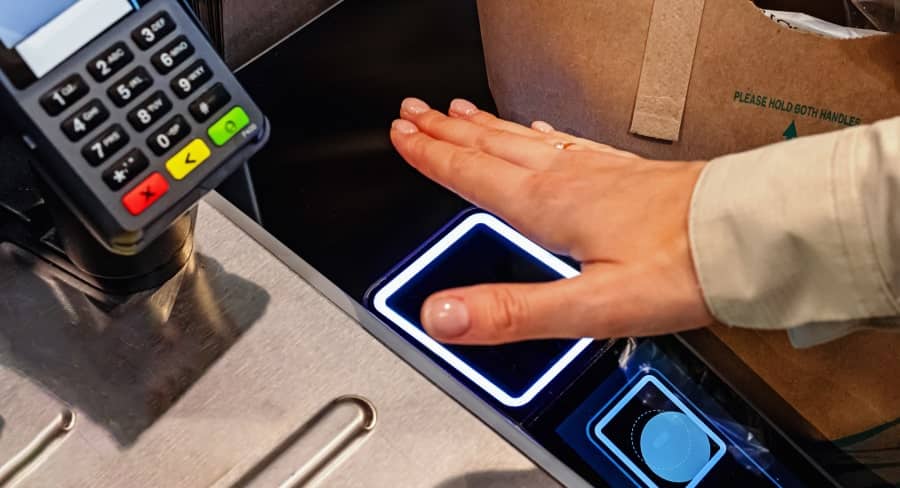
4. Biometric authentication
The integration of biometric authentication methods is a growing trend within self-checkout systems, incorporating customer fingerprint, wrist, or facial recognition to heighten security and streamline payments. The individualized nature of these body parts' attributes makes them easy to implement in retail settings.
Industry leaders like Amazon and Mastercard are expanding biometric checkout tech to enhance customer experiences and boost sales. Amazon One, introduced in 2020, enables customers to check out by scanning their palm. It's now available at Amazon Go, Amazon Fresh, Whole Foods, and third-party locations. The system links a credit card to the palm scan, creating a secure signature for swift checkout.
Panera is piloting Amazon One for loyalty members, aiming to streamline the POS experience and improve customer-worker relationships. Mastercard is also experimenting with biometric checkout solutions, as consumer comfort with this technology grows. Amazon One's applications span travel retailers, stadiums, and entertainment venues. This has led to biometric technology market projections to reach $18.6 billion by 2027.

5. Smart carts
Smart carts are standard shopping carts fitted with clip-on devices featuring screens and sensors, which can seamlessly scan purchases as shoppers place them in the cart and complete payments, streamlining the checkout process. Recently, these devices have found a new niche within retail media networks.
Enhanced versions, such as those by smart cart maker Veeve, now include additional cameras to scan the store's interior. These cameras link the messages displayed on the screens with what the shopper observes in the store, fostering a dynamic shopping experience. This advanced technology allows shoppers to interact with a retailer's retail media network or access information through the device's app and content management system.
The technology has established heightened interest from consumer packaged goods (CPGs) companies and retailers. As it offers an opportunity for targeted and personalized communication, retailers can engage customers with tailored promotions, coupons, and product details based on their current location within the store. This not only enhances the shopping experience but also enables retailers to foster stronger connections with customers, boost brand loyalty, and ultimately drive sales growth.
Subscribe to our newsletter
Get our blogs and the latest retail news delivered to your inbox monthly.
Recent Posts
How to Use 3D VR for Smarter Store Layout and Design
Explore how VR is revolutionizing grocery store layout and design planning by offering enhanced blueprint visualization in immersive 3D environments. Grocery store layout strategy is essential for establishing a positive and productive customer experience. A thoughtfully designed layout not only improves convenience but also fosters a sense of discovery, leading to longer, more enjoyable shopping…
Sauce & Condiment Sales Heat Up as New Tech Helps Out
Young Millennials and Gen Z consumers have fueled a boom in hot sauce trends and condiment sales. This surge is pushing leading brands and retailers to elevate their game with smarter virtual product innovation and assortment optimization. The condiment and hot sauce industry is thriving in 2024, driven by evolving consumer tastes and the growing…
Candy, Bar, and Snack Industry use VR to Keep Up with Consumers
Discover the snack trends of 2024 that are pushing the snack bar market and candy industry to innovate and evolve using cutting-edge technology. The Convenience Store News 2024 Industry Deep Dive revealed numerous snack food industry trends, highlighting a shift toward healthier snacking options and a growing preference for savory flavors. As various snack categories…

